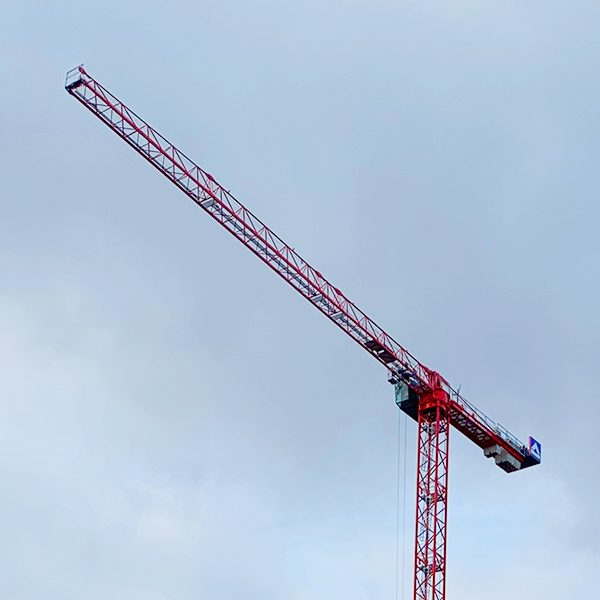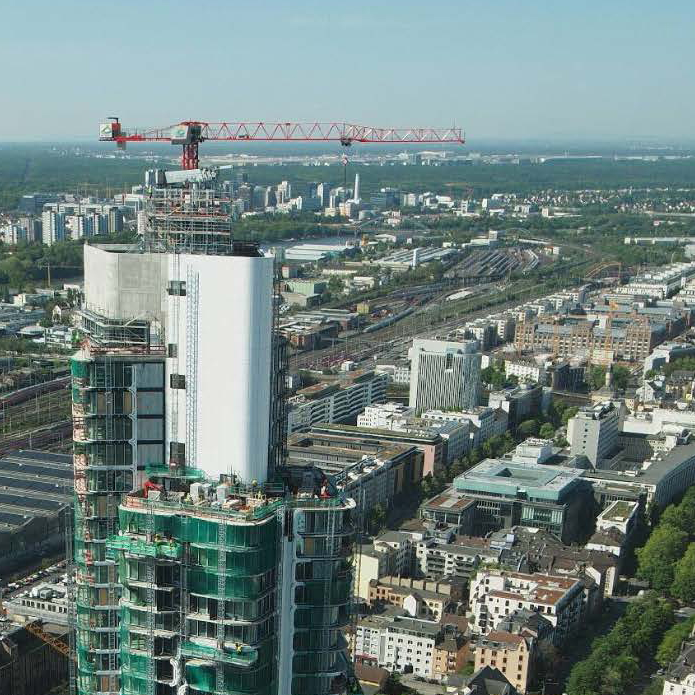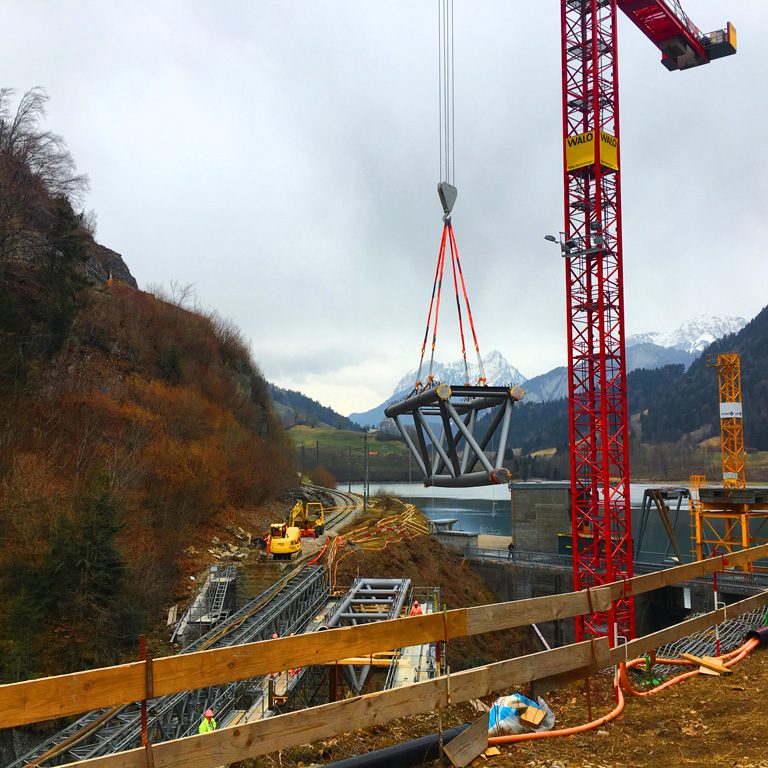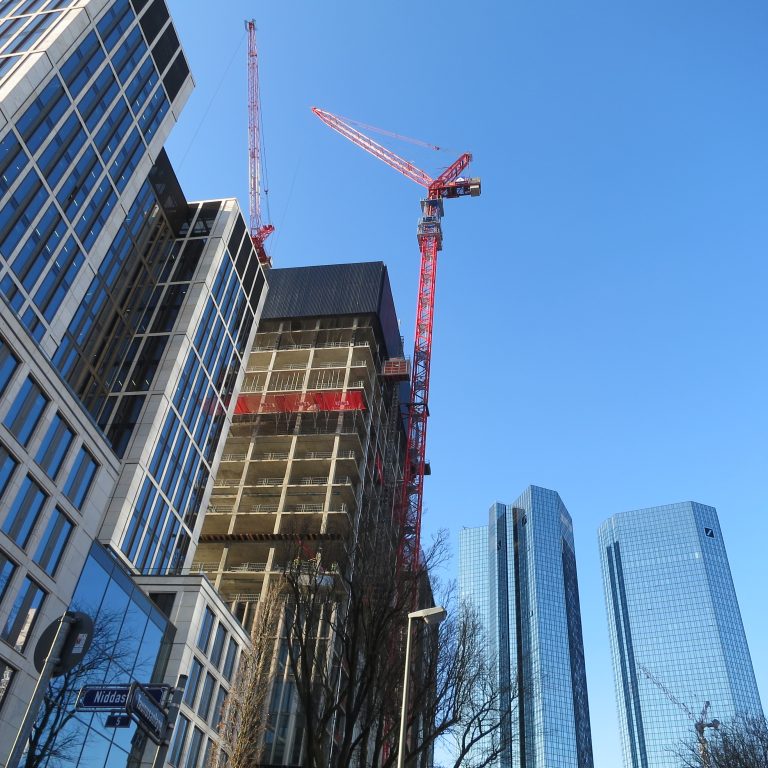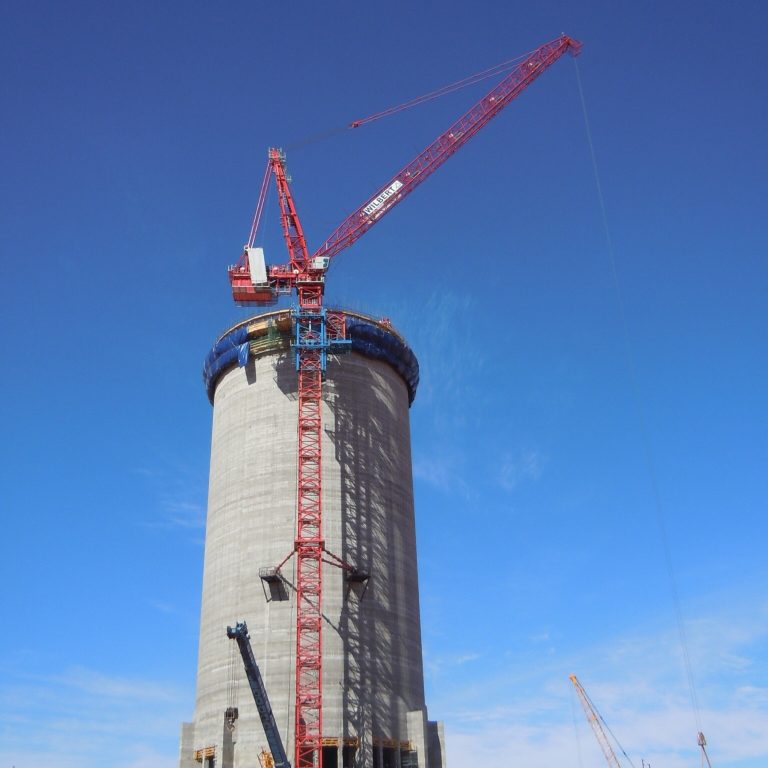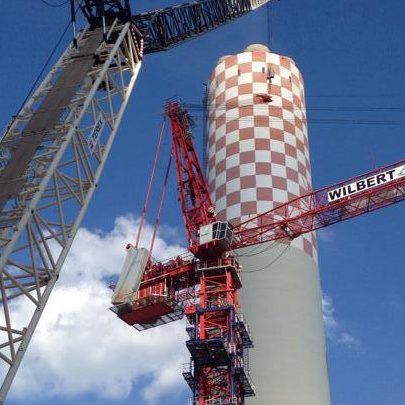The construction project
HWR’s new campus was built on an area of approx. 40,000 m² between September 2012 and December 2015. The concept created by the architectural practice, HPP, won the competition for the project consisting of the integrated urban location of four university buildings, three special-purpose buildings (lecture hall complex, cafeteria and library) and a parking garage.
More information about the project can be found on the website of Ruhr West University of Applied Sciences (German only).
The brief
It was the biggest construction site in Mühlheim at the time: The campus consisted of eight building sites; the tallest building was to be six storeys high.
Hermann-Josef Peters, the department head of the building and real estate management authority of the regional state of North Rhine Westphalia, Germany, highlighted the technical challenge and compared the building of the University of Applied Sciences with that of the correctional facility – at least in terms of complexity.
The implementation
Of the nine cranes used, four were WILBERT trolley cranes:
3× WT 200 e.tronics with hook heights of between 32.5 and 48.1 m and radii of between 45 and 50 m as well as a WT 320 e.tronic with a hook height of 28.4 m and a radius of 45 m. All four cranes were arranged on cross frame elements.
HWR’s new campus was built on an area of approx. 40,000 m² between September 2012 and December 2015. The concept created by the architectural practice, HPP, won the competition for the project consisting of the integrated urban location of four university buildings, three special-purpose buildings (lecture hall complex, cafeteria and library) and a parking garage.
More information about the project can be found on the website of Ruhr West University of Applied Sciences (German only).
The brief
It was the biggest construction site in Mühlheim at the time: The campus consisted of eight building sites; the tallest building was to be six storeys high.
Hermann-Josef Peters, the department head of the building and real estate management authority of the regional state of North Rhine Westphalia, Germany, highlighted the technical challenge and compared the building of the University of Applied Sciences with that of the correctional facility – at least in terms of complexity.
The implementation
Of the nine cranes used, four were WILBERT trolley cranes:
3× WT 200 e.tronics with hook heights of between 32.5 and 48.1 m and radii of between 45 and 50 m as well as a WT 320 e.tronic with a hook height of 28.4 m and a radius of 45 m. All four cranes were arranged on cross frame elements.

